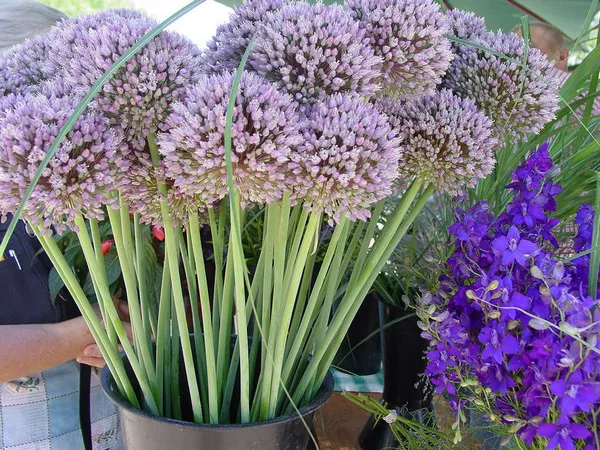In the intricate tapestry of garden design, shade flowers play a pivotal role in creating enchanting, cool retreats beneath the dappled sunlight. These unique blooms thrive in areas with reduced sunlight, adding depth and diversity to shaded landscapes. From delicate woodland settings to urban gardens with limited sun exposure, shade flowers offer a plethora of colors, shapes, and textures. In this exploration, we delve into the world of these captivating blooms, understanding their characteristics, and uncovering the secrets to cultivating a flourishing shade garden.
Impatiens: Vibrant and Versatile Shade Companions
Impatiens, known for their vibrant and jewel-toned blossoms, are stalwarts in the realm of shade flowers. These versatile plants come in various species, including the common Impatiens walleriana and the New Guinea Impatiens. The latter, with its larger flowers and glossy leaves, is particularly well-suited for partial shade. Impatiens boast an impressive color palette, offering shades of pink, red, purple, and white. These adaptable flowers thrive in the shade, brightening up even the darkest corners of a garden with their prolific blooms.
Bleeding Heart (Dicentra Spectabilis): A Romantic Shade Icon
Bleeding Heart, scientifically known as Dicentra spectabilis, is a perennial shade flower celebrated for its romantic and distinctive appearance. With arching stems adorned with heart-shaped flowers, Bleeding Heart adds a touch of old-world charm to shaded gardens. The flowers, often pink or white, appear in spring and early summer, creating a captivating display. This shade-loving perennial thrives in moist, well-drained soil, making it a perfect choice for woodland gardens or areas with filtered sunlight.
Hosta: Foliage Extravaganza with Subtle Flowers
While primarily recognized for their stunning foliage, Hosta plants also produce subtle and elegant flowers that contribute to the overall allure of shaded spaces. Hosta flowers come in various shades, including lavender, white, and pale purple, and are often trumpet-shaped. The real star, however, is the lush and diverse foliage that Hostas bring to the shaded garden. With an array of sizes, leaf shapes, and colors, these shade-tolerant plants create dynamic and visually pleasing landscapes.
See Also: How to make paper mache flowers?
Astilbe: Feathery Plumes in the Shade
Astilbe, with its feathery plumes of flowers, is a shade-loving perennial that adds grace and texture to shaded gardens. These elegant blooms, available in shades of pink, red, purple, and white, appear in late spring and early summer. The finely divided, fern-like foliage of Astilbe complements the flowers, creating a harmonious and sophisticated look. Astilbe thrives in consistently moist soil and is a favorite choice for shady borders or alongside water features.
Lungwort (Pulmonaria): Dynamic Foliage and Changing Flowers
Lungwort, or Pulmonaria, is a shade flower known for its dynamic foliage and unique flowers that change color over time. The leaves of Lungwort often feature silver spots or splotches, adding an interesting dimension to shaded gardens. The flowers start as pink or purple and gradually shift to shades of blue as they age. This captivating transformation creates a visually engaging display, making Lungwort a sought-after choice for gardeners looking to add intrigue to their shade plantings.
Foxglove (Digitalis): Towering Elegance in Partial Shade
Foxglove, scientifically known as Digitalis, is a majestic shade flower that adds vertical interest to partially shaded areas. Known for its tall spikes of tubular flowers, Foxglove blooms in early to mid-summer, creating a stunning focal point in the garden. The flowers come in various colors, including pink, purple, white, and yellow. Foxglove thrives in partial shade and well-drained soil, making it an ideal choice for woodland gardens or areas with filtered sunlight.
Coral Bells (Heuchera): Colorful Foliage and Delicate Flowers
Coral Bells, or Heuchera, combine colorful foliage with delicate, bell-shaped flowers, making them a versatile choice for shaded gardens. The foliage comes in an array of shades, including green, purple, silver, and variegated patterns. The dainty flowers, borne on slender stems, add an airy quality to the overall appearance. Coral Bells are well-suited for both partial shade and full shade conditions, making them a valuable addition to shade gardens with varying light levels.
Toad Lily (Tricyrtis): Exotic Blooms for Shady Corners
Toad Lily, or Tricyrtis, is an exotic and lesser-known shade flower that deserves attention for its unique and intricate blooms. The orchid-like flowers of Toad Lily feature intricate patterns and appear in late summer to early fall, extending the blooming season in shaded areas. The flowers come in shades of pink, purple, white, and yellow, adding a touch of whimsy to woodland gardens or shady corners. Toad Lily thrives in moist, well-drained soil and brings a sense of the exotic to shaded landscapes.
Conclusion
Shade flowers, with their diverse colors, shapes, and textures, offer a canvas of beauty in areas where sunlight is filtered or limited. From the vibrant blooms of Impatiens to the romantic allure of Bleeding Heart, and the dynamic foliage of Hosta to the exotic charm of Toad Lily, these shade-loving plants prove that gardens can thrive even in the absence of direct sunlight. By carefully selecting and nurturing shade flowers, gardeners can transform shaded spaces into enchanting retreats, celebrating the unique beauty that flourishes in the shadows.


